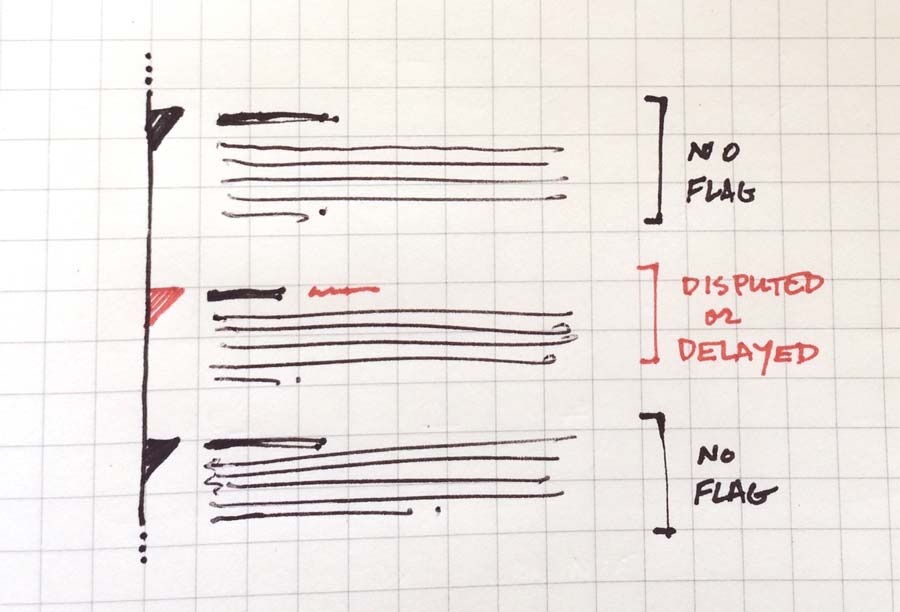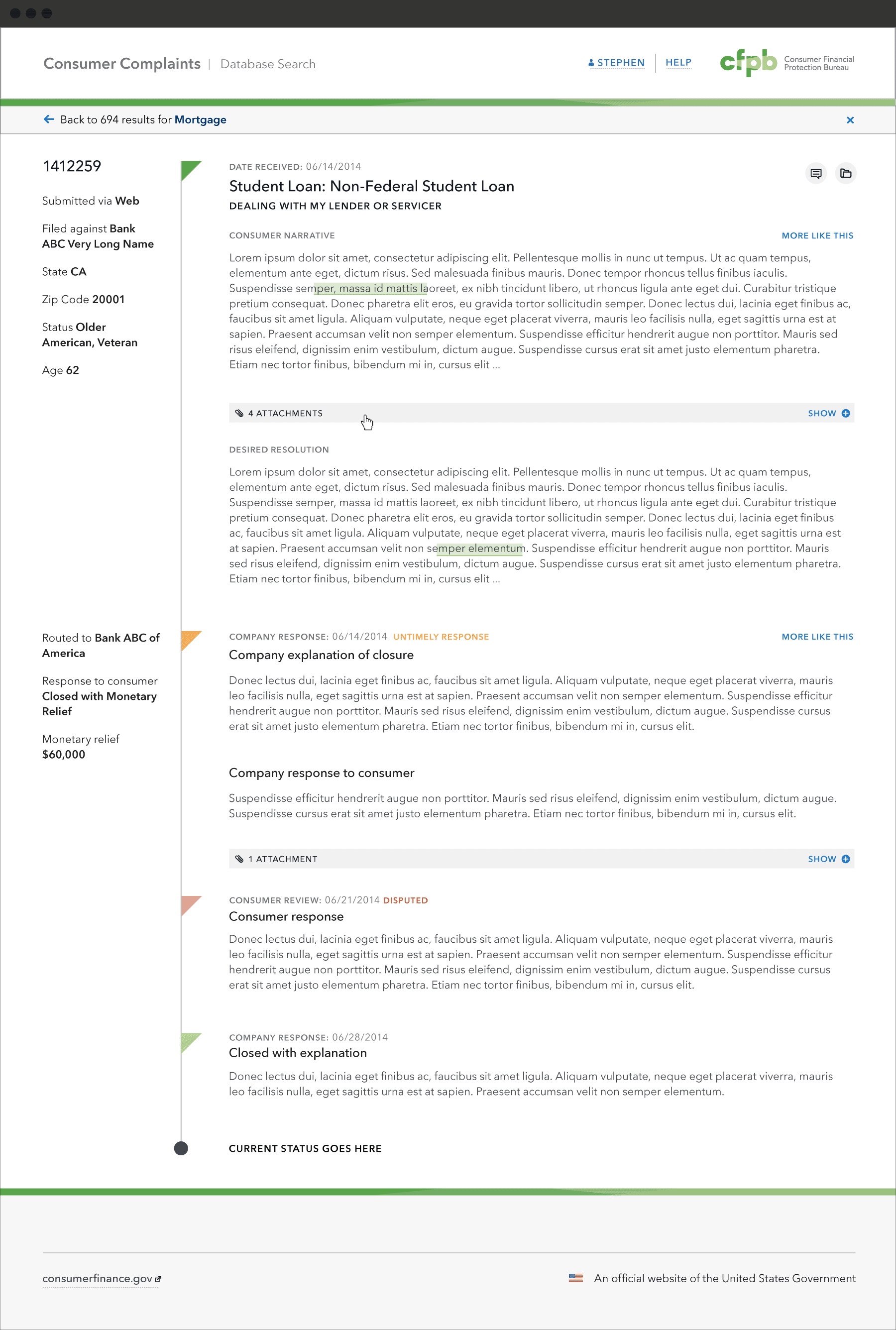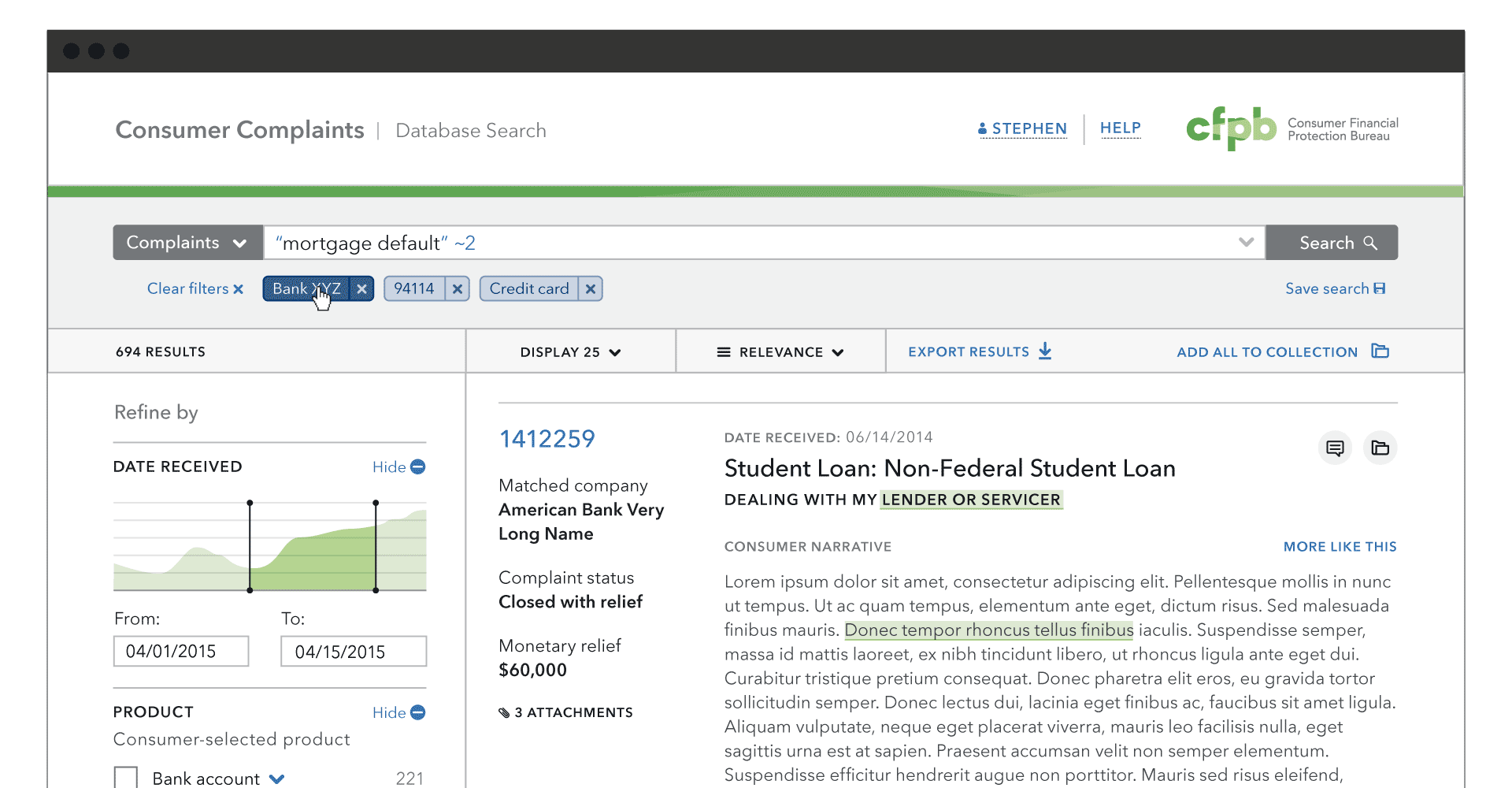

The CFPB also analyzes the data to identify trends and problems in the marketplace to help us do a better job supervising companies, enforcing federal consumer financial laws and writing rules and regulations. All departments at CFPB make requests for datasets from the Consumer Complaint Database to support these efforts.
In an effort to improve (1) the experience of culling complaints from the database and (2) achieving more accurate and useful results, we were tasked with building out a custom search interface for the database, employing elastic search capabilities.
Our database now consists of over 700,000 complaints submitted to over 3,000 companies. Our challenge is to develop tools that let the Bureau bring the voice of the consumer into examinations, outreach, and enriched analyses of the financial marketplace.

We spent some time defining the anatomy of complaints and dissecting user stories to backup potential interface design features.
We also interviewed analysts about their current processes to identify key pain points, such as only being able to export complaints by amending the URL in one of their current tools. Much of their current work is manual and time consuming, such as reading long complaint narratives in excel and copy-pasting them into word to do keyword highlighting.
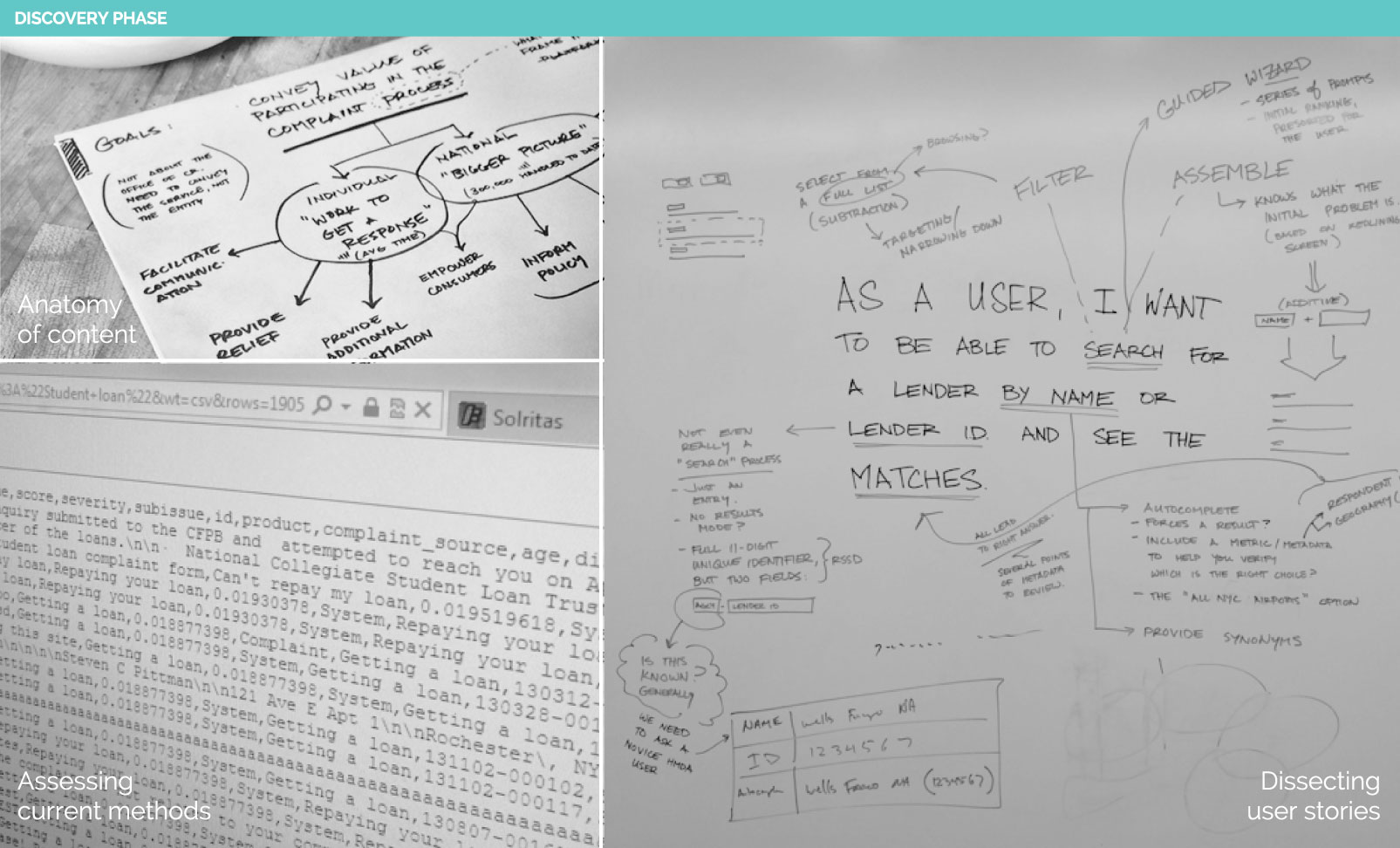
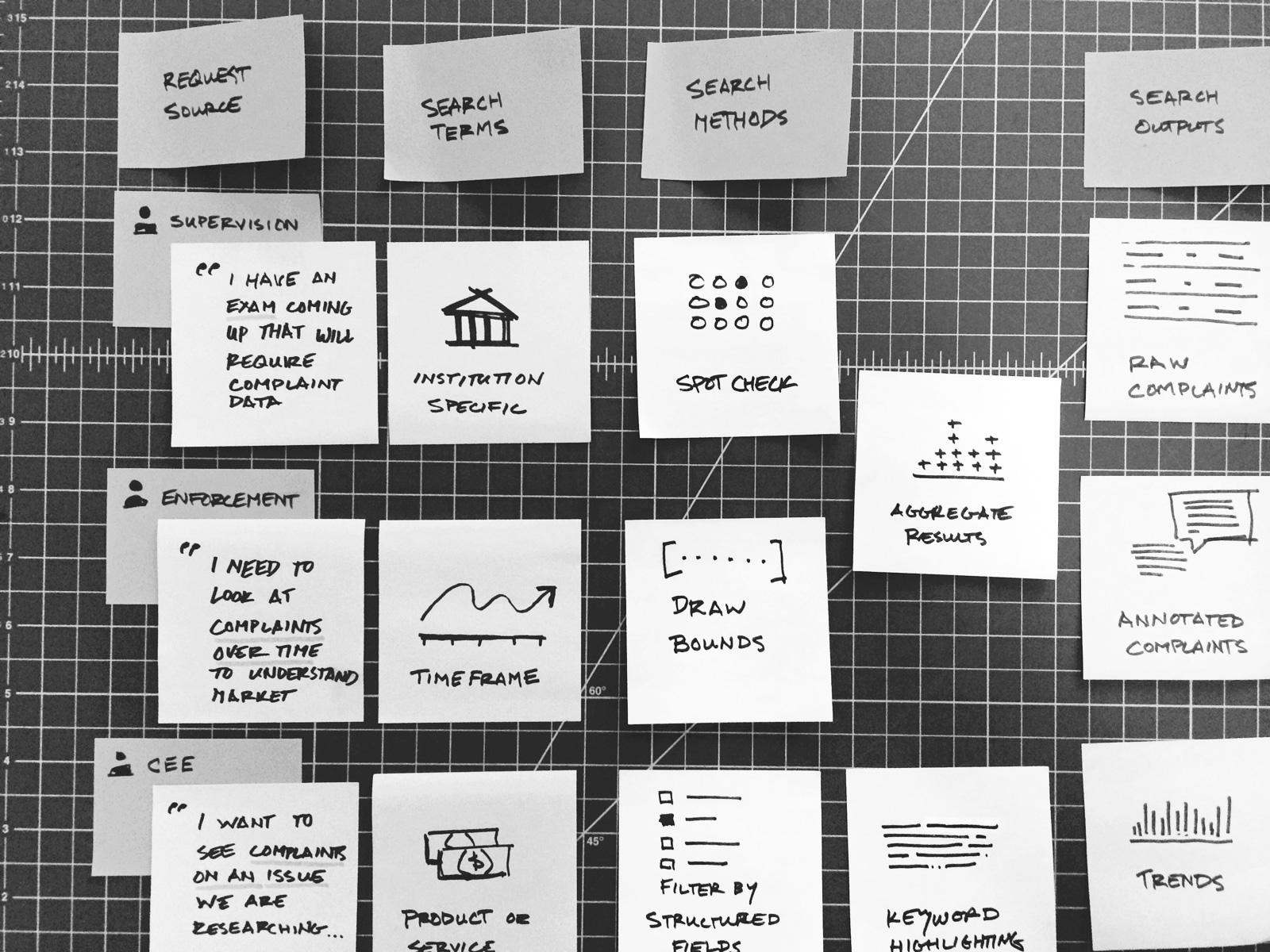
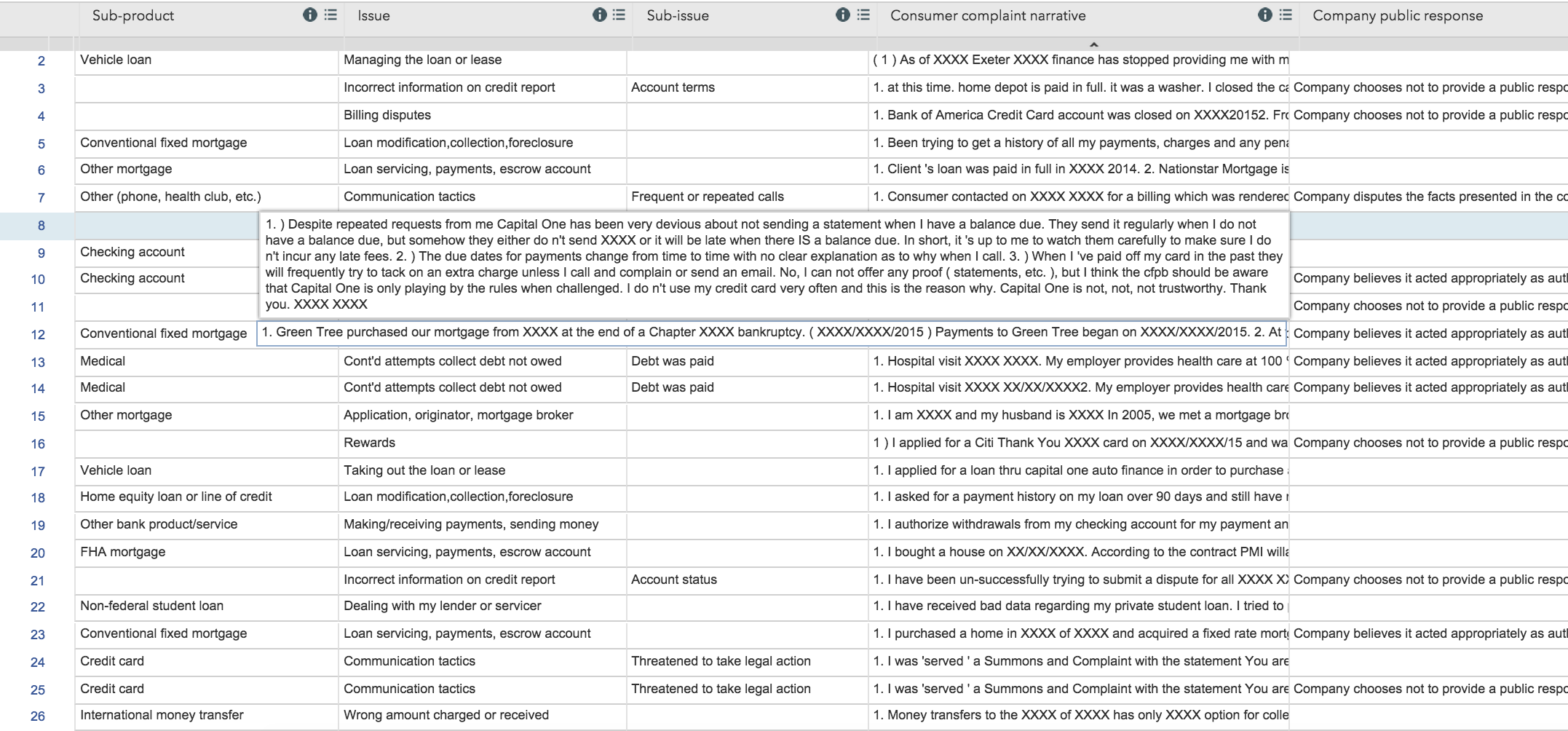
The database search tool is part of an overall suite of analytics tools, including auto-classifying complaints using natural language processing.

Investigatory vs. exploratory modes for searching the complaint database based on level of familiarity with the dataset.
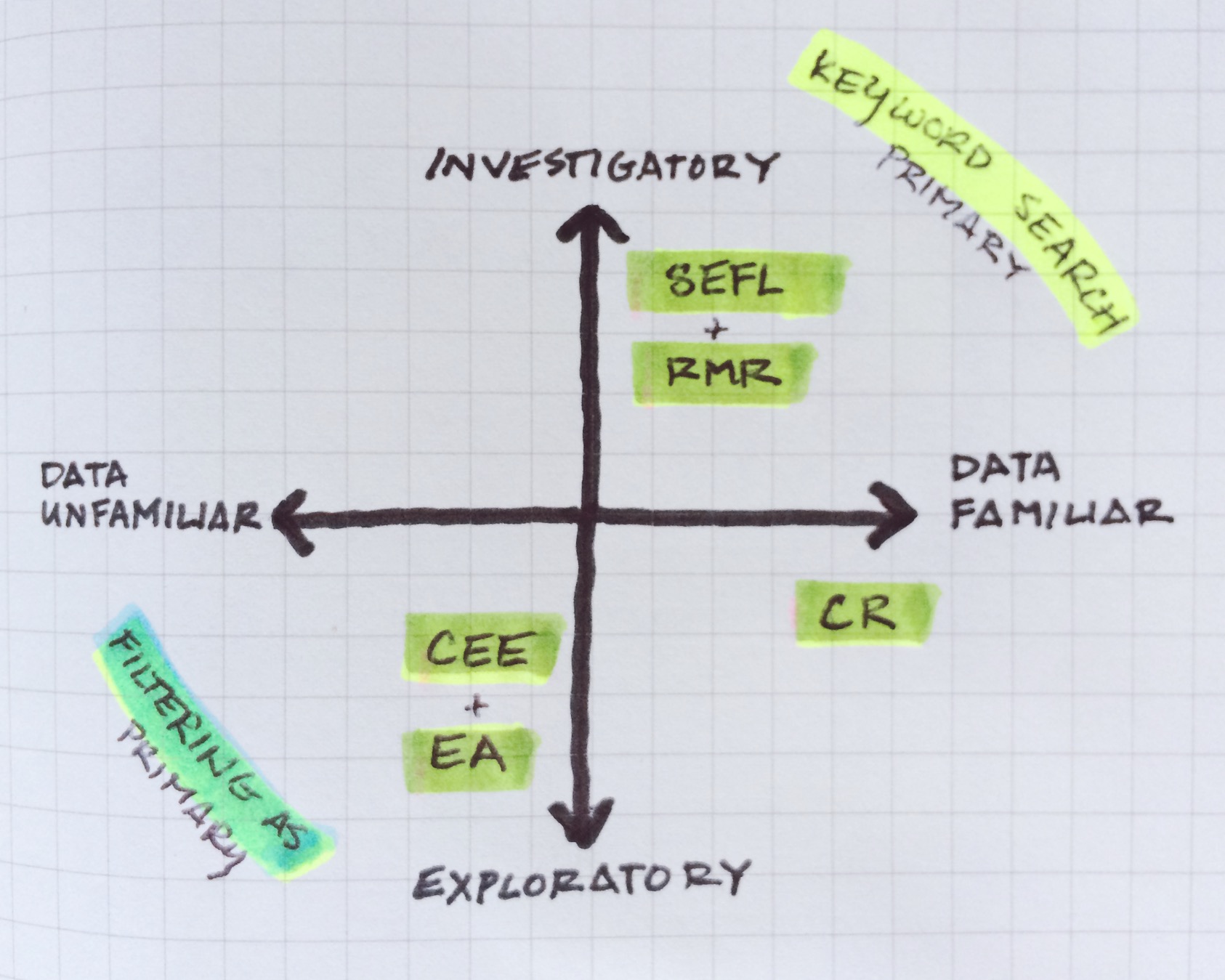
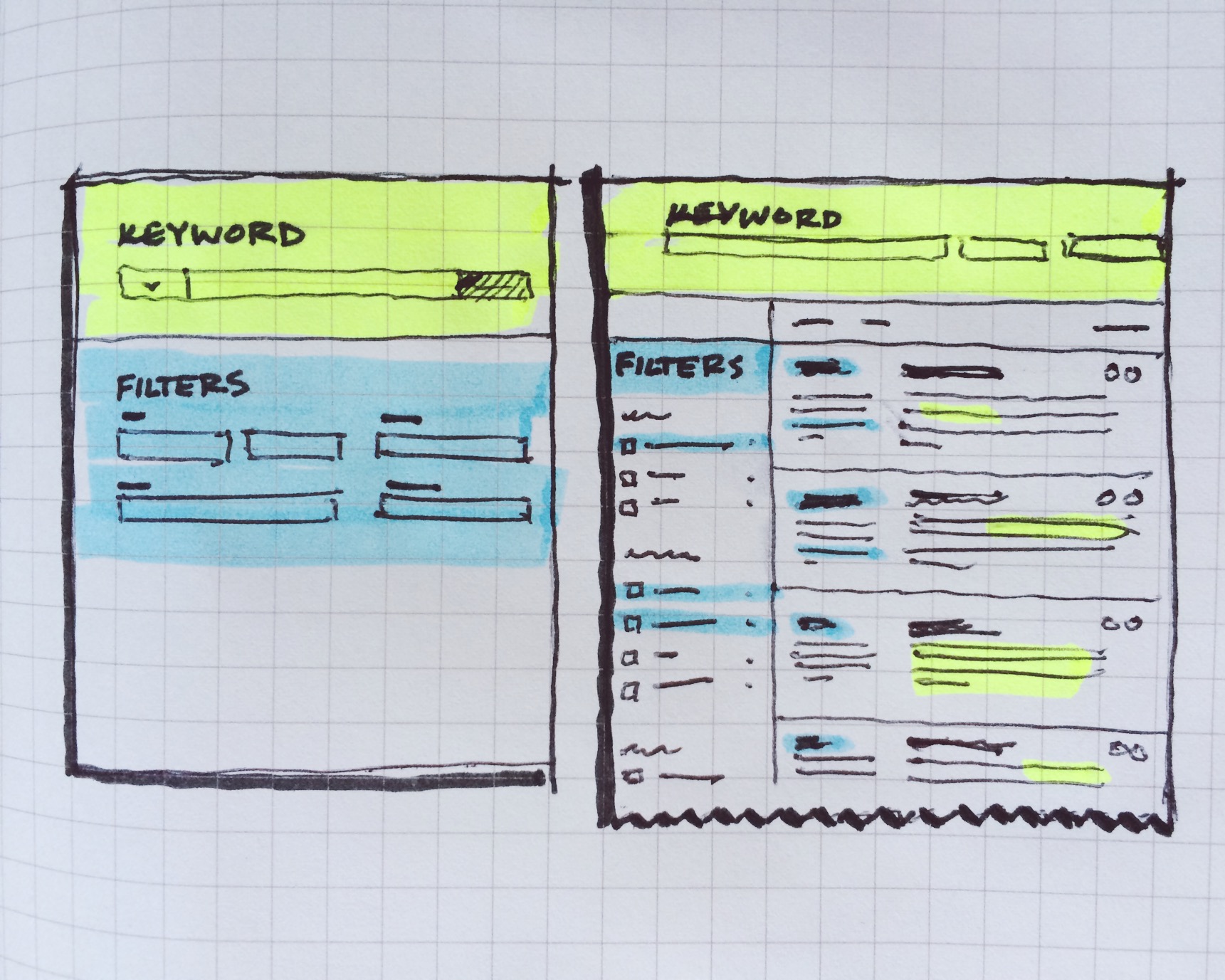
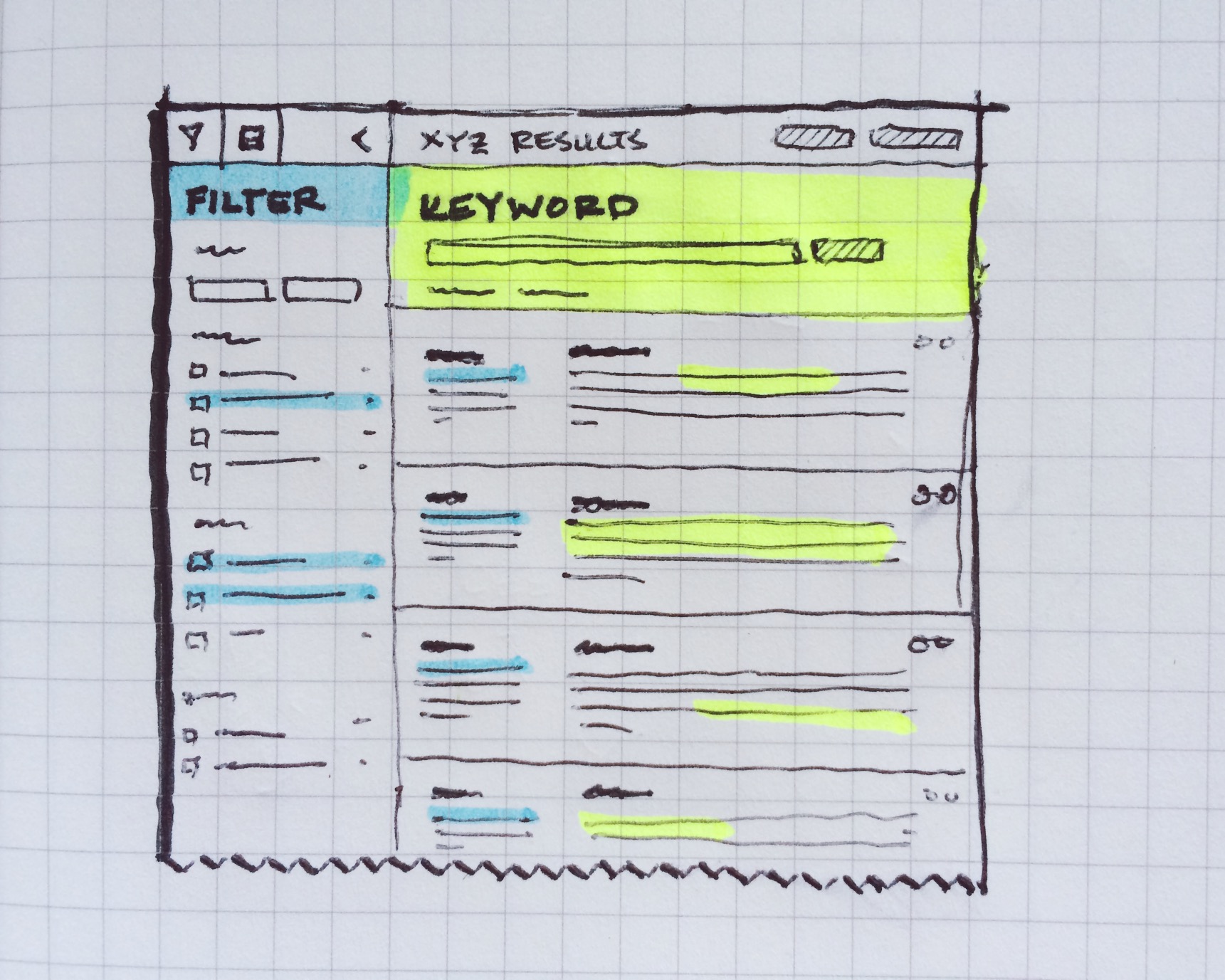
Save users time by providing clickthrough to add syntax directly to the search bar
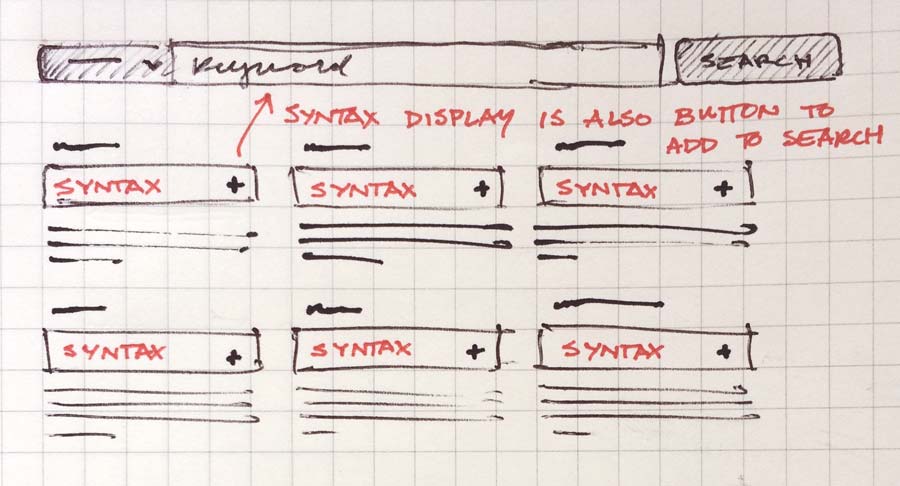
Highlight parts of advanced search syntax that are editable vs. part of the syntax structure.
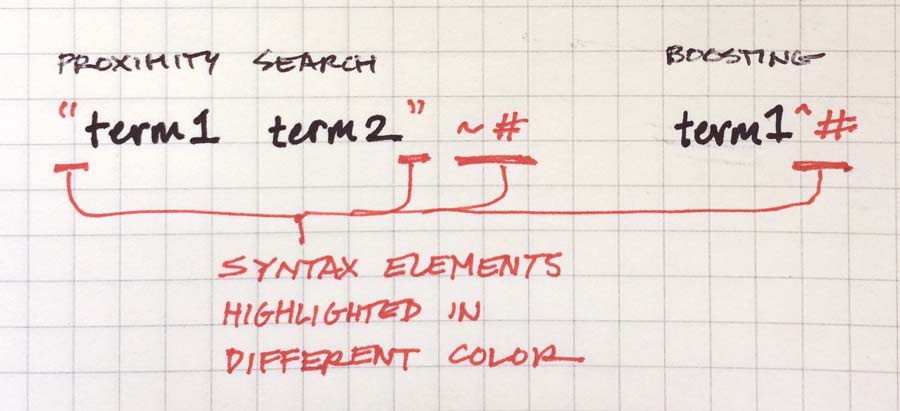
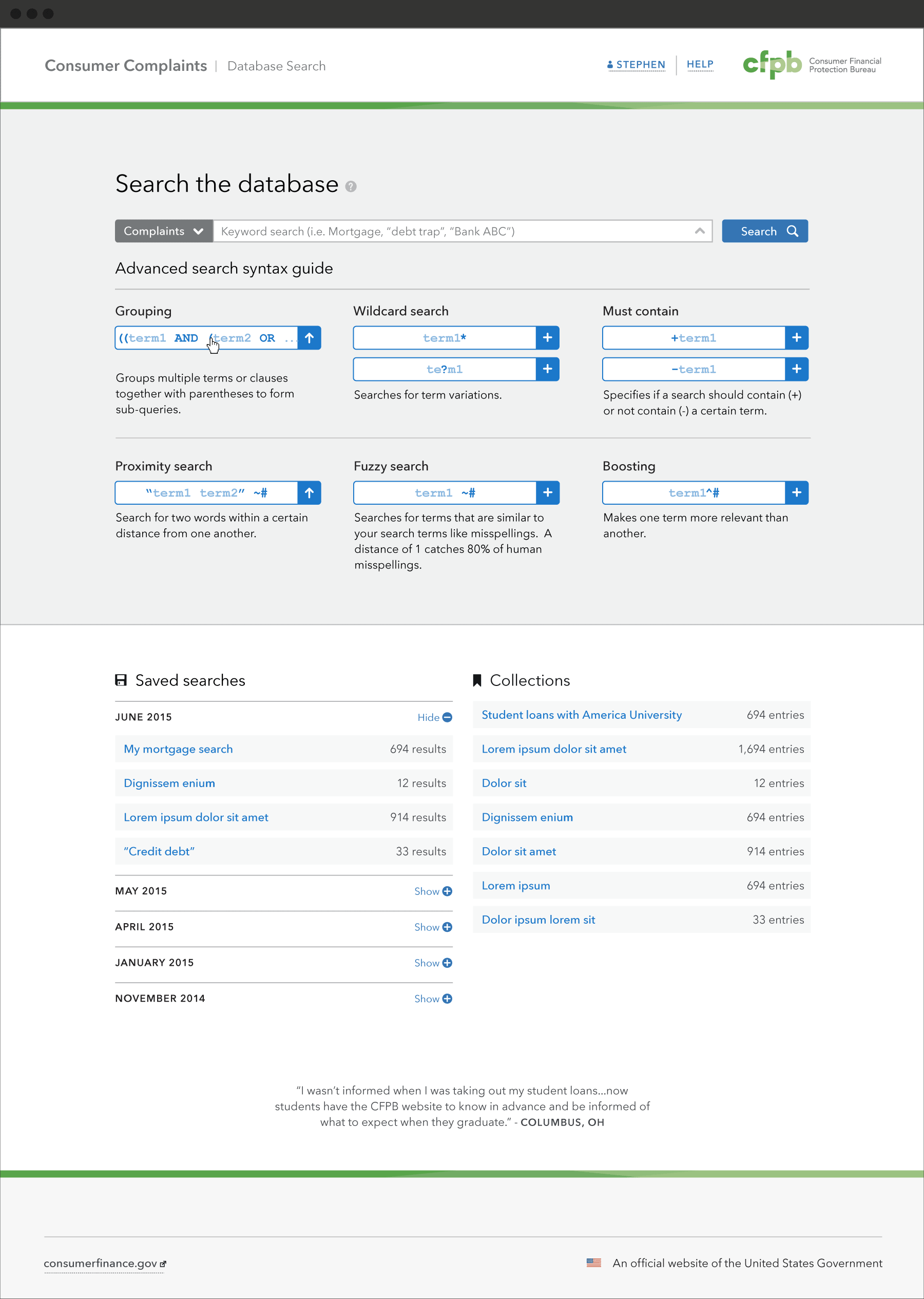
Our team uses GitHub to post issues & bugs, explore design options, and submit code changes.
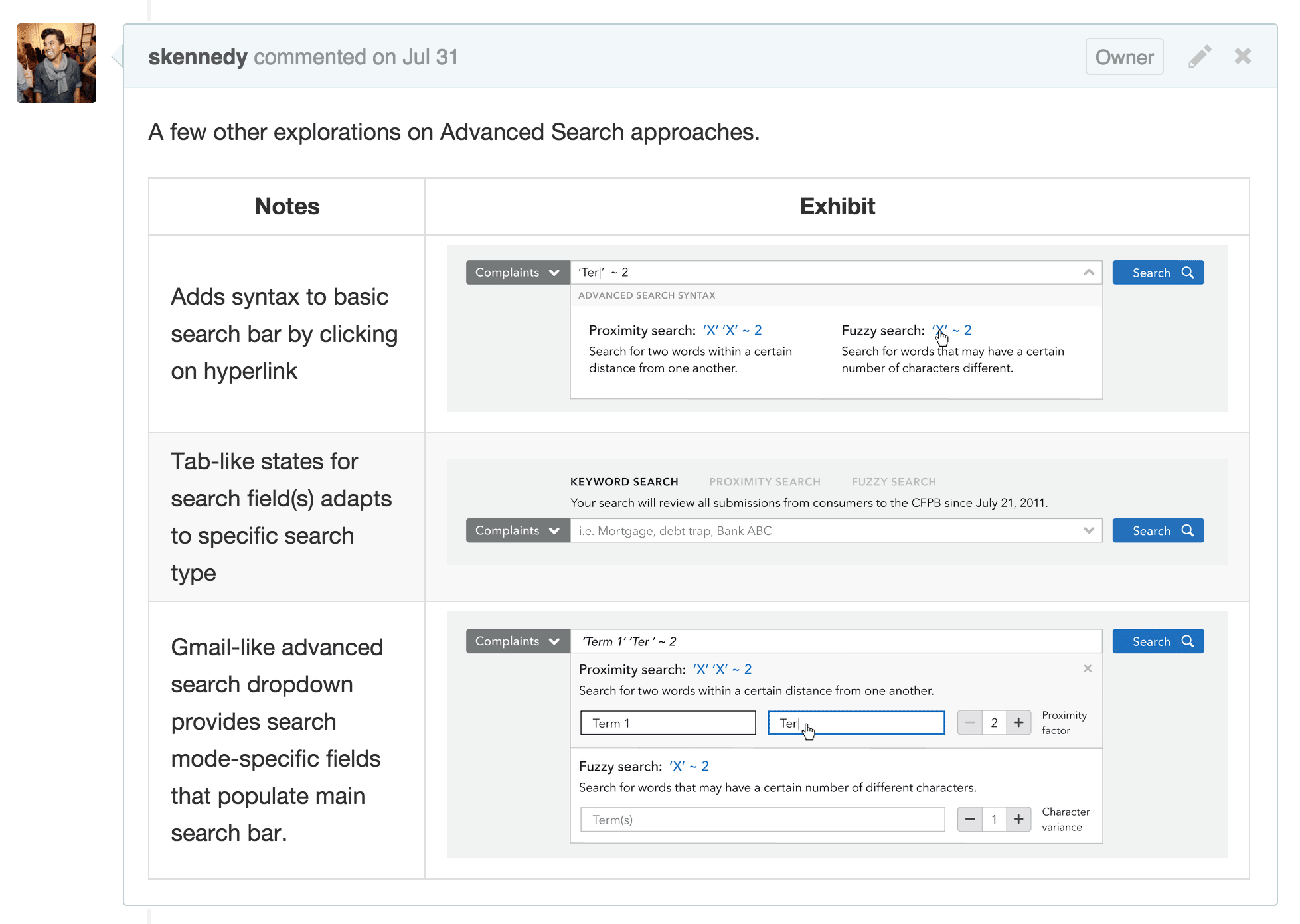
Develop standard terminology to differentiate key actions on the results page, so users can link actions like saving your search, adding to collections, and exporting data with the associated outcomes.
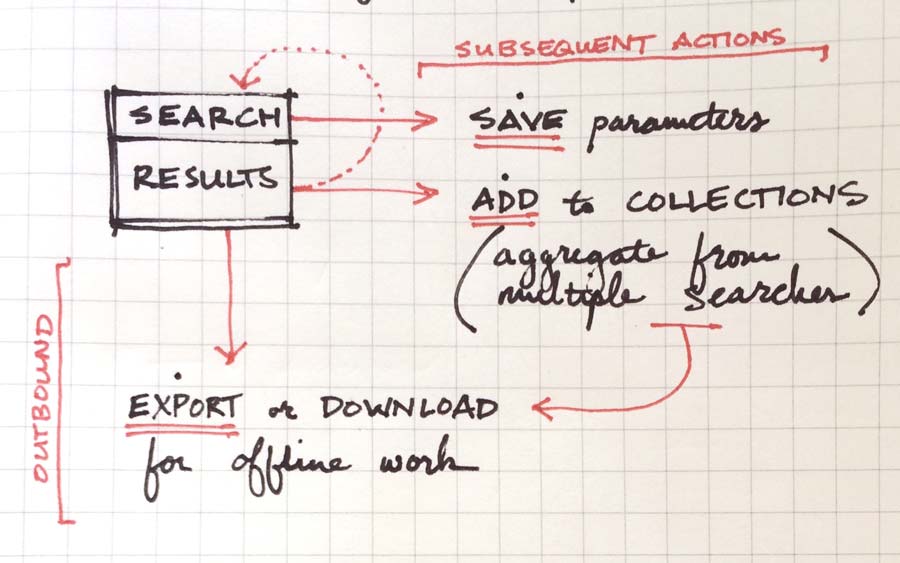
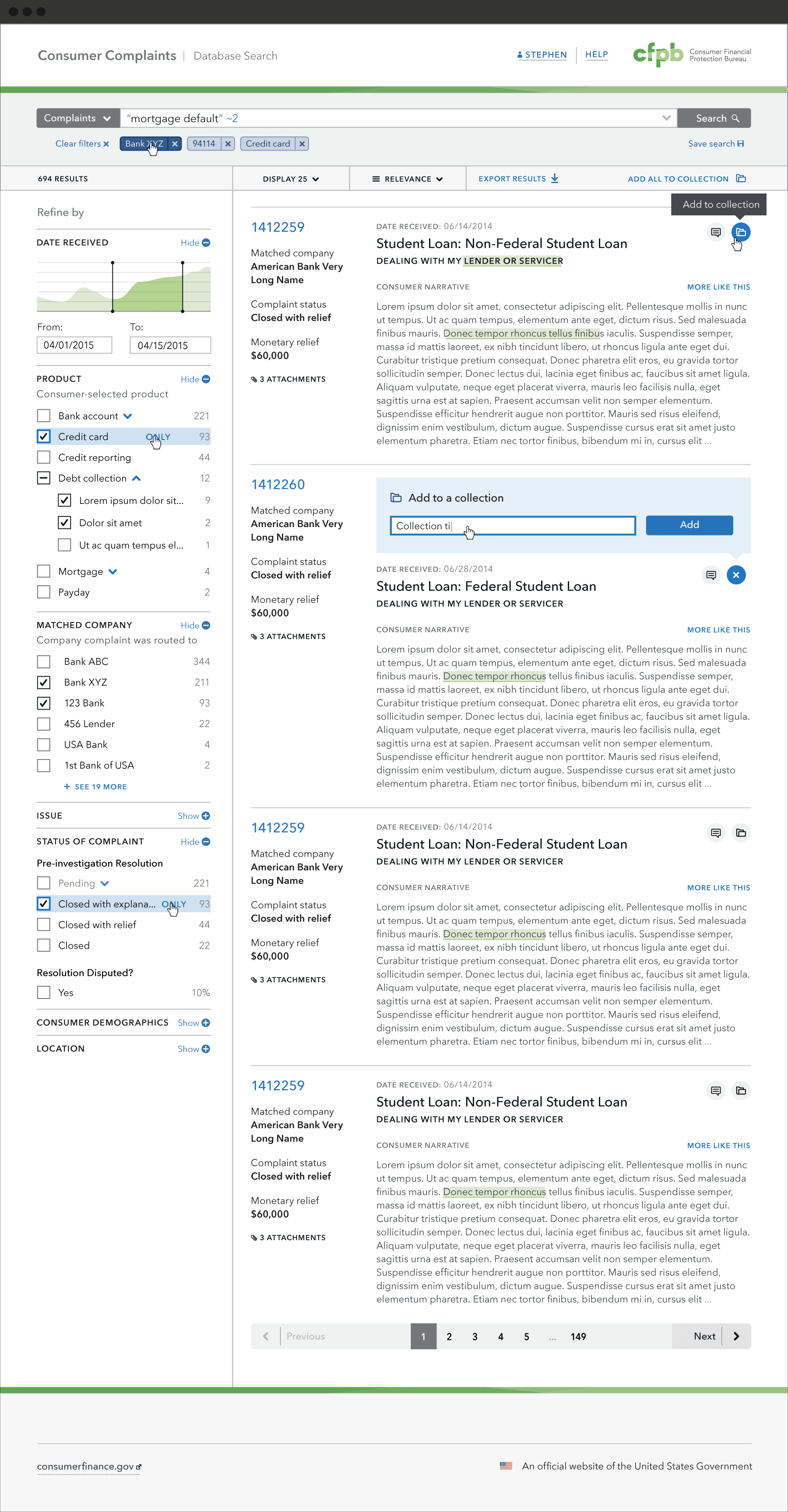
We explored microinteractions for experiences on specific complaints, such as selecting / deselecting for export (shown right) or adding notes.
Flag steps in the complaint process with color-coded indicators to highlight issues such as delayed responses from companies or disputes from consumers.
